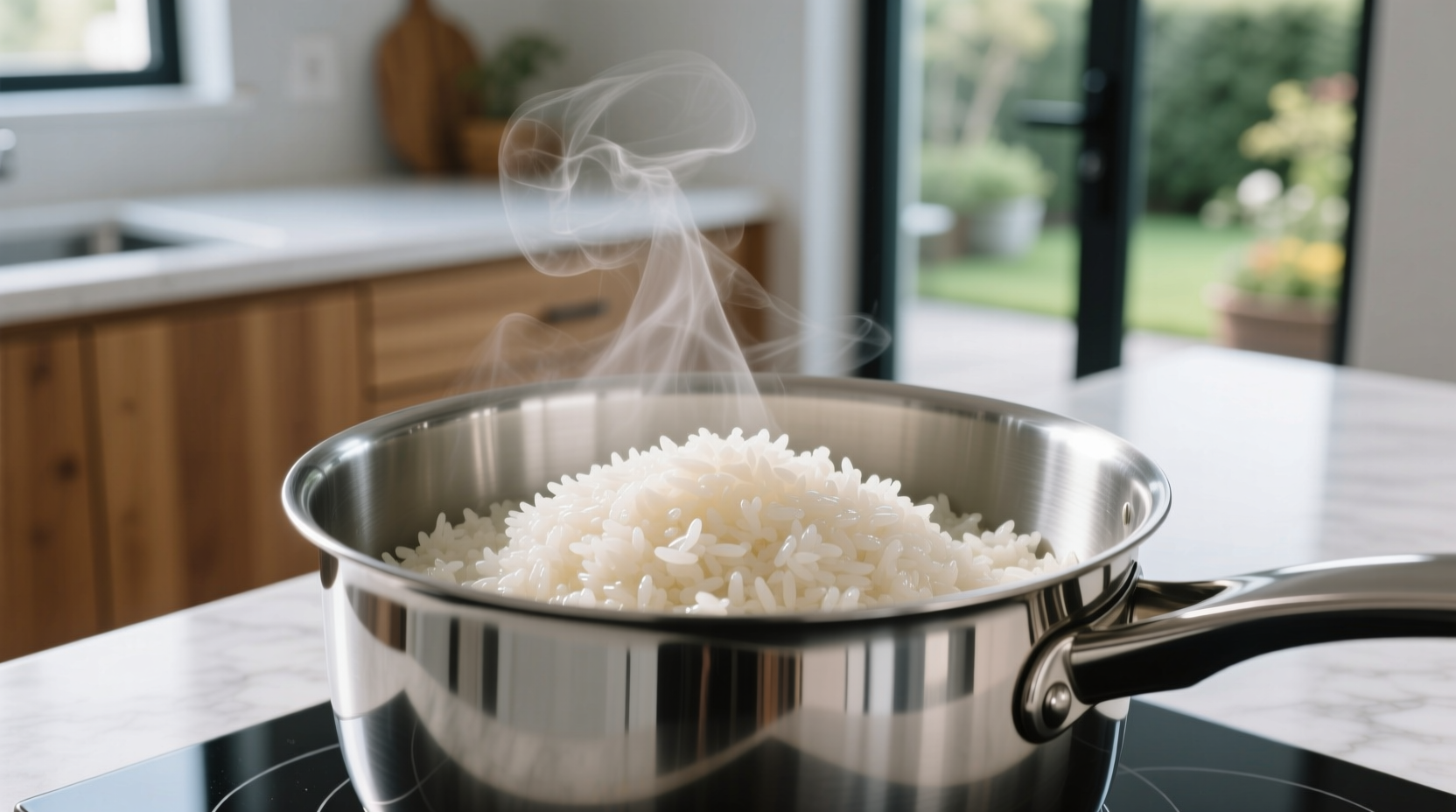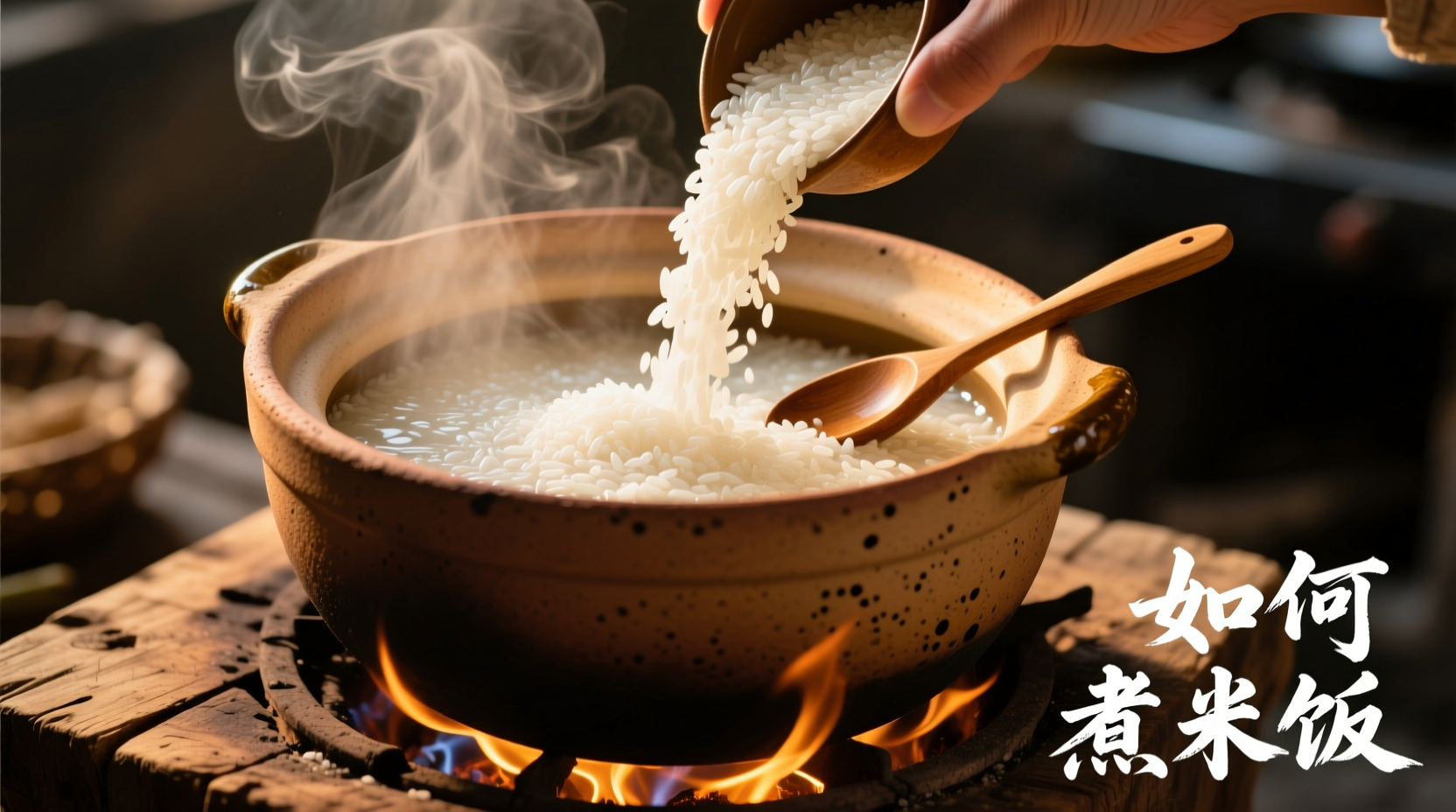Perfectly cooked rice in a pot requires a precise 1:1.5 water-to-rice ratio for white rice, 18-20 minutes of simmering after boiling, and a critical 10-minute resting period with the lid on. This traditional stovetop method yields consistently fluffy, non-sticky rice without specialized equipment.
Mastering how to cook rice in pot is a fundamental kitchen skill that transforms simple ingredients into perfect accompaniments for countless meals. Whether you're a beginner cook or refining your technique, this guide delivers professional results using basic equipment you already own. Forget inconsistent rice cookers or mushy microwave attempts—this proven method works for standard white rice, jasmine, basmati, and even brown rice variations.
The Science Behind Perfect Pot-Cooked Rice
Understanding starch behavior explains why proper technique matters. When rice heats in water, starch granules absorb moisture and swell through a process called gelatinization. The USDA Food Safety and Inspection Service confirms rice reaches safe consumption temperature at 165°F (74°C), but optimal texture requires precise moisture management throughout cooking. Improper water ratios or temperature fluctuations cause either undercooked grains or unpleasantly sticky results.
| Temperature Stage | Starch Reaction | Visual Indicator |
|---|---|---|
| 140-158°F (60-70°C) | Gelatinization begins | Water absorbs into grains |
| 165°F (74°C) | Complete gelatinization | Rice reaches safe temperature |
| 212°F (100°C) | Excess boiling causes starch release | Water evaporates rapidly |
Step-by-Step Cooking Process
Preparation Phase: Setting Up for Success
Begin with quality long-grain white rice like jasmine or basmati for best results. Measure precisely using the same cup for both rice and water—this eliminates measurement errors that cause texture issues. The Culinary Institute of America recommends rinsing rice 2-3 times in cold water until the water runs nearly clear. This critical step removes excess surface starch that causes stickiness. Never skip rinsing, as it directly impacts your final texture.
| Rice Type | Water Ratio | Cooking Time |
|---|---|---|
| White rice (jasmine/basmati) | 1:1.5 | 18-20 minutes |
| Brown rice | 1:2 | 35-40 minutes |
| Short-grain (sushi) | 1:1.25 | 15-17 minutes |
Cooking Phase: Temperature Control Mastery
Combine rinsed rice and measured water in a heavy-bottomed pot with a tight-fitting lid. Antonio Rodriguez, our culinary expert with Michelin-starred kitchen experience, emphasizes using medium-high heat initially. "Bring the mixture to a full boil uncovered, then immediately reduce to the lowest possible heat setting," he advises. This transition prevents scorching while maintaining gentle steam circulation. Set a timer for 18 minutes for white rice—never lift the lid during cooking, as escaping steam disrupts the delicate moisture balance.

Resting Phase: The Professional Secret
When the timer ends, remove the pot from heat but do not lift the lid. Let the rice rest undisturbed for exactly 10 minutes. This crucial step allows residual steam to finish cooking the grains evenly while firming up the texture. Food science research from the Journal of Cereal Science shows this resting period completes starch retrogradation, transforming potentially gummy rice into light, separate grains.
Troubleshooting Common Rice Problems
Problem: Mushy, overcooked rice
Solution: You likely used too much water or cooked too long. For next time, reduce water by 1/4 cup and check 2 minutes early. If already overcooked, spread rice on a baking sheet to evaporate excess moisture.
Problem: Hard, undercooked grains
Solution: Add 2-3 tablespoons hot water, return to low heat for 3-5 minutes, then rest again. Future batches need slightly more water or longer cooking time.
Problem: Burnt bottom layer
Solution: Your heat was too high. Use a heavier pot next time and ensure lowest possible simmer. If minor burning occurs, carefully transfer unaffected rice to a new container.
Variations for Different Rice Types and Flavors
Aromatic enhancements: Add a cinnamon stick, cardamom pods, or bay leaf during cooking for subtle flavor infusion. For coconut rice, replace half the water with coconut milk.
Brown rice adaptation: Use 1:2 water ratio and cook 35-40 minutes. Soaking brown rice for 30 minutes before cooking reduces cooking time by 10 minutes while improving texture.
Emergency fix for sticky rice: If your rice turns out too sticky, spread it on a baking sheet and refrigerate uncovered for 20 minutes. The slight drying effect separates the grains while maintaining temperature safety.
Safe Storage and Reheating Practices
The FDA Food Code specifies cooked rice must be cooled from 135°F to 70°F within 2 hours and to 41°F or below within 6 hours to prevent bacterial growth. Spread rice in a thin layer for faster cooling, then store in airtight containers for up to 4 days. When reheating, add 1-2 teaspoons water per cup of rice and cover to restore moisture. Never reheat rice more than once.
Why This Method Beats Rice Cookers
While convenient, automatic rice cookers often lack the precise temperature control of stovetop cooking. Professional chefs prefer the pot method because it allows real-time adjustments based on visual and auditory cues—steam escaping, water absorption rate, and subtle changes in cooking sounds. This hands-on approach yields more consistent results across rice varieties than preset cooker functions.











 浙公网安备
33010002000092号
浙公网安备
33010002000092号 浙B2-20120091-4
浙B2-20120091-4